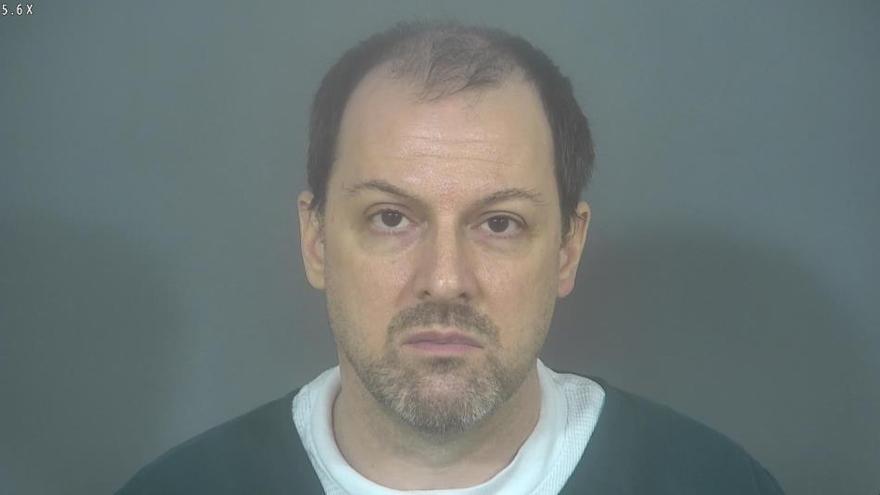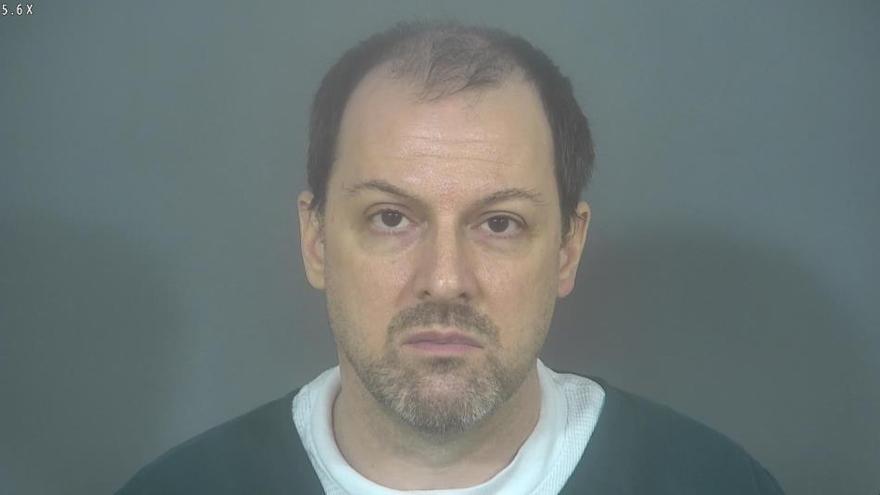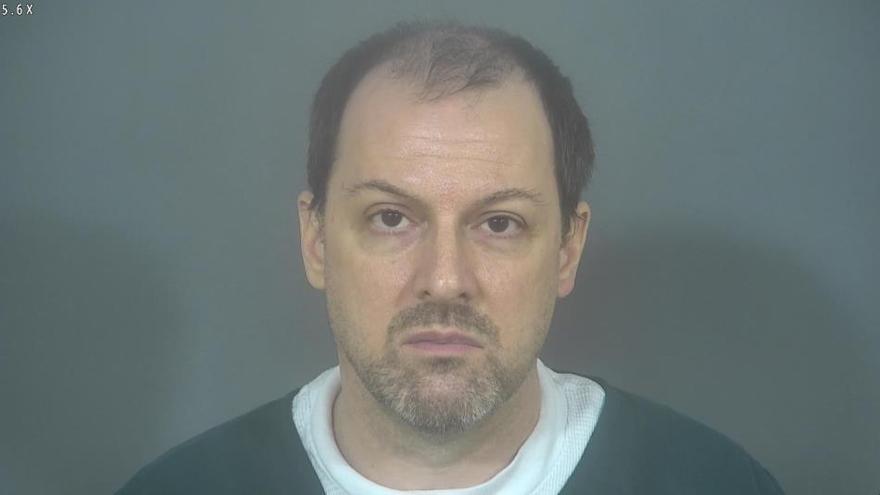Day 3 of Jeff Pelley’s post-conviction relief evidentiary hearing
See Also
Tuesday’s testimony included a former crime scene tech who testified he saw the jeans in the washing machine after the murders.
Toni Beehler, who spoke to Bob Pelley in the days before the murder, testified.
She told the court Bob said he wasn’t a reverend, then said he had a life before this and worked for very bad people. He claimed it was the mob. He said he moved money for the bad guys and wanted out and they found him because of the church directory. He said they were sending people to kill his family.
Before court ended on Tuesday, the court asked the state and defense to provide briefs on whether the police reports can be considered exceptions to the hearsay rule.
The judge said the defense only addressed whether police reports are business records but she wanted the defense to go further.
The judge said past court of appeals cases have treated police reports as public records rather than business records.
Police reports and investigatory records should fall under public records to be admitted, but they may not be admitted for all purposes, that some portions of those documents could be considered hearsay.
Scott Campbell was called to the witness stand as the first witness of the day. He said he has talked to Pelley many times because he worked for Pelley’s defense team.
He reviewed the evidence in the case with the defense team. He believes it was at Metro Homicide on Jefferson.
Campbell said he had difficulty obtaining things he needed to do his job. He said there were items of evidence he was not able to view.
The defense confirmed with Campbell that he never saw the Annis shopping bag that was entered into evidence.
Pelley said he put his jeans and shirt in the Annis shopping bag when he changed into his tux on prom night.
He said it was difficult for him to investigate and he had trouble following some aspects.
The second witness was Cathy Hawley who lives in Florida and knew Bob Pelley. She said she knew the Pelleys, she and her family were friends with the Pelley family. She also testified that she and Bob had lunch every day.
Hawley testified the defense never contacted her regarding Bob Pelley’s work at the bank in Lee County, Florida prior to the family’s move to Indiana.
The next witness, Thomas Kontinos, worked with the Lee County Sheriff’s Office and investigated the homicide of Eric Dawson that happened in September 1988.
The witness is being used to show the defense in the original trial was insufficient.
During the investigation into Dawson’s murder, he reviewed thousands of documents.
Kontinos says the Hawleys continue to be suspects in the Dawson murder.
When he executes search warrants he takes everything that is within the parameters of the warrant.
After the trial where three of the Hawleys were convicted in the land fraud, about 10 years later, the sheriff’s office purged the evidence in the Dawson murder. The sheriff’s office thought there was a trial, so they didn’t need the evidence any more, but the trial was for fraud but not for murder.
The state objected to the question for speculation. She directed Kontinos to answer the question without speculating.
When asked about records related to the murder of Eric Dawson’s murder Kontinos said he saw records that the evidence was purged. He was at the state attorney’s office at the time. The evidence was purged before 2002.
Search warrants were served at the Hawley home and the credit bureau in March or April 1989. He was at Phil Hawley’s home, not the credit bureau.
He arrested Phil Hawley on July 18, 1989. The state is objecting to the testimony for relevance.
The judge said it appears counsel is trying to show there was no investigation into Bob Pelley’s world in Florida. Defense counsel is arguing the defense in the original trial would have had access to the records in Florida if the case had been tried in 1989 instead of waiting until 2002 – after the documents in the Dawson case were destroyed.
Pelley worked for and was friends with Phil Hawley, according to court records.
The judge allowed the question as it pertains to ineffective assistance of counsel.
Kontinos said when he served the search warrant at the Hawley home. He seized a 3M commercial copy machine and hundreds of stock certificates with the name Caribbean Industries Inc which was the name put on the quick claim deed for Dawson’s property. A derringer was also seized.
Kontinos and another investigator drafted the probable cause affidavits requesting arrest warrants for three members of the Hawley family. He prepared part of the PCA.
Hawley was convicted in 1992.
Kontinos testified Eric Dawson was not involved in criminal activity.
Kontinos said the Hawleys and the Dawsons were suffering financial strain due to their property holdings.
Kontinos was released from the witness stand.
Jacque, Jeff’s sister, has taken the stand.
She was asked if she knew the Hawley family. She said she did when they lived in Cape Coral. Her father worked for Hawley and they went to church together. They saw each other weekly at church.
In November of 1986, the Pelley family moved out of Florida.
She said her dad woke her up if he had to leave. He told her where his gun and ammo was, she testified.
She testified Alan Baum and Andre Gammage were Jeff’s attorneys. She said she communicated with Baum the day Jeff was arrested.
She received copies of the discovery so she could help with Jeff’s defense. She took notes and provided those notes to defense counsel.
Baum interviewed Jacque and she provided articles about the credit bureau in Florida, a DEA building being blown up and the names of people to contact.
On March 19, 1989 her great grandmother died and the next month her father was murdered.
Jacque testified Mark Senter knew her family but acted like he didn’t know them. She said her dad shared information with Mark. Senter worked with the Indiana State Police, she testified.
She said Toni Beehler contacted her in 2006, which was right before sentencing.
She was 12 and Jeff was 15 when they moved to Indiana.
The state asked about her birthdate and to clarify Bob was her father. The state asked if Jacque was involved with hiring Jeff’s defense attorney, which she was.
Jacque was then released from the witness stand.
Jacque then asked if she would be allowed to hug her brother. The judge is allowing them to take a five-minute break so she can hug her brother when the cameras are off. Several members of the defense were brought to tears.
Court took a five minute recess.
When court resumed, Alan Baum, Jeff’s former attorney, called in via Zoom. He has been an attorney for 53 years. His specialty is criminal defense.
He was hired to represent Jeff Pelley when Jeff was arrested in California in August 2002. Jeff was arrested at LAX for the murders and Jeff’s family hired Baum to represent him during the extradition process.
Baum was later asked to continue representing Jeff during his case in Indiana. He also hired Andre Gammage, a local attorney, and Scott Campbell, an investigator. Baum was considered the lead counsel.
Baum was asked about Larry Byrd and why he was listed as a witness but not called. He said he likely decided his testimony was not necessary.
He also put Dr. Wagner on the witness list but did not call him. He decided not to call Wagner when he spoke with Wagner, who was uncooperative when discussing Wagner’s work on the case. Baum thought Wagner would not cooperate as a witness.
He said he would have preferred to have Dr. Wagner testify because he would have testified about the time of death for the victims. Without Wagner, Baum didn’t have a time of death expert.
When asked about Toni Beehler, Baum said he did not know her name before July 2006, when Pelley was tried.
When asked about whether he received videotapes as part of discovery. He said he believes if any were shared, they would have gone to the other attorney, Gammage.
Baum testified he came to South Bend eight or ten times throughout the case.
Watson then read a document that has been entered into evidence. The document is the summary of the interview with Toni Beehler.
He said he was unaware of the Beehler’s statement at the time of the trial. He says he would have pursued that lead from Beehler and if there was relevance, he would’ve presented that as an alternate motive for the murder of the Pelleys.
He doesn’t believe it was a clerical error that he didn’t receive it. He was not at all aware of the statement until Watson brought it to his attention.
He was also unaware there was a VHS recording of the interview, which is about 23 minutes long.
Baum said Jeff’s family told him about how quickly the family left Florida for Indiana. They said it was unusual and puzzling.
He said at trial, he had some difficulty presenting evidence about Florida during the trial. He would have presented that theory had he known about Beehler’s statement. The court limited evidence about Bob’s activities in Florida.
Baum believes he sent an investigator to Florida but it was a dead end.
He said had he known all of the allegations of what happened in Florida, he would have pursued that avenue.
His theory at trial was that Jeff didn’t commit the murders and the evidence of that included the timeline, physical evidence, police investigative failures, among other things, Baum said.
He said police stopped investigating when they decided Jeff was guilty.
Watson asked Baum if he was aware of a theft ring in Lakeville at the time of the murders. He said he thought he remembered John Hertzog and Jeff were suspects.
Baum was asked about Jeff’s interrogation that was recorded the Monday after the murders. In that video, Jeff told investigators that his father was investigating the theft ring and was motivated in finding out if Jeff was involved and who else was involved, Baum said.
Jeff warned John Hertzog about Bob’s investigation. Baum said he believed part of Jeff’s interview was redacted and that portion was not played for the jury.
He was then asked if he was aware Campbell was having difficulty viewing the physical evidence in the case. Baum said when Campbell went to look at the evidence, he had not been able to empty the bags to take a look inside.
Baum said he never asked for the full FBI file. The FBI tested some of the evidence. Baum remembered seeing reports that did not further the state’s theory. He said he did see the FBI lab analysis that was not “damaging” to his case.
Baum said there was not defense strategy to not challenging the state’s statement the blue jeans had been washed.
He didn’t remember if he noticed there was no documentation in the evidence of clothing being removed from the washing machine. If he had, it would have impeached the state witness that there were items of Jeff’s clothing taken from the washing machine.
Did he notice in the May 6 letter to the FBI listed only a pink shirt and socks as taken from the washer? Baum said he must not have noticed it. He recalled the state presented witnesses that testified wet clothes were removed from the washer.
When he stipulated to the evidence in the case, he had not seen the brown bag or seen the blue jeans
He said a willingness to stipulate is a decision made through the course of the trial rather than ahead of time. Stipulating evidence means it is accepted as undisputed.
He assumes the fact there was no blood on the jeans was helpful to the defense and why he would have stipulated. He doesn't believe he stipulated they had been washed.
Baum said the Annis bag and its contents were not published to the jury during the original trial, but he has never seen those before. The first time he saw them was when Watson showed him the Annis bag via Zoom during the hearing.
The state asked how old Baum is. He said he is in his early 80s. Then the state asked Baum how many trials he has litigated. Baum estimated he has done around 30.
When asked about his defense theory, Baum said the timeline was the issue. He couldn’t have killed his family and done all the other things in such a very short time frame.
The state asked about the elements of Jeff’s videotape that were redacted for the jury. Baum said if it included information about another crime he would have weighed the benefits and the risks before decided what to show the jury.
When the state asked if Baum thought the jury got it wrong, not that Baum did a good job. The defense objected, but the judge allowed it.
Baum didn’t know how to answer that question. He said Jeff was innocent and there was insufficient evidence to convict him, but he believed he did everything he could.
Baum said there are some things he has been aware of since the trial as part of the appeals process after conviction.
The state asked whether or not Baum sent Campbell to Florida to investigate the bank situation. Campbell testified he didn’t go to Florida.
Baum said he must have sent someone else if it wasn’t Campbell.
The state then asked if he had any knowledge of what the jury did with the evidence in the jury room. Baum said he wouldn’t have any idea.
The state then presented a document as evidence. The letter is from Campbell to Baum.
Baum was asked about an expert witness he called to testify about the washcloths. Baum said it was relevant to a critical issue of the case.
The defense in re-direct asked about whether they would have had someone look into the Florida connection. Baum said he remembered the Hawley family, the name, but not much else about the Hawley family.
Before adjournment, the judge went over the exhibits entered into evidence. The only item into evidence was a letter from Scott Campbell to Alan Baum.
Court then adjourned for the day.






